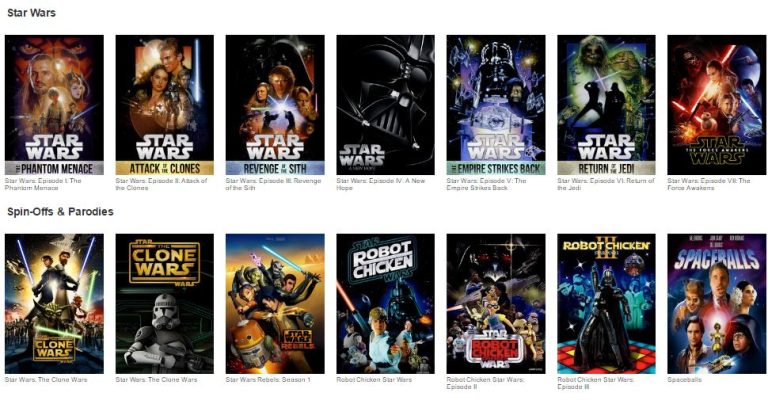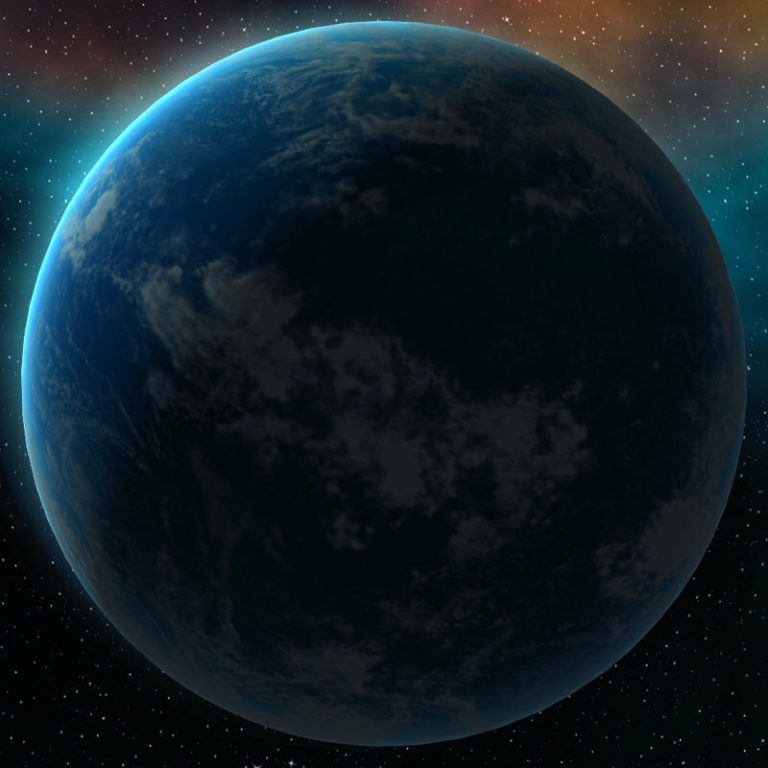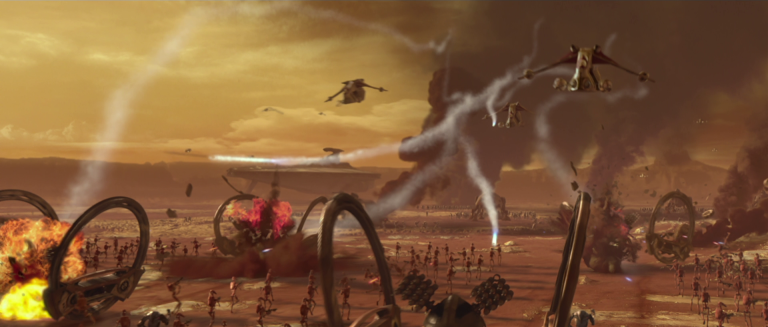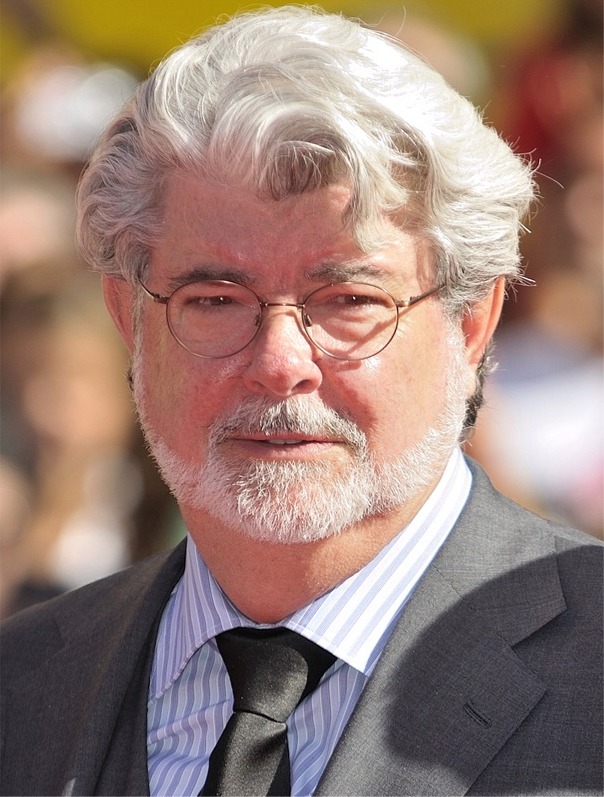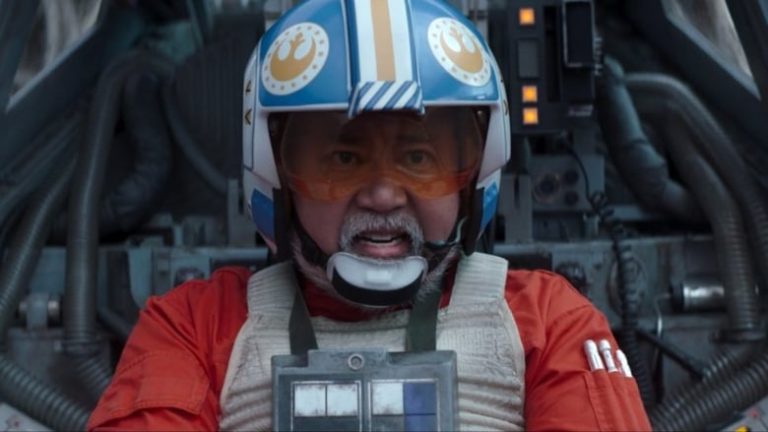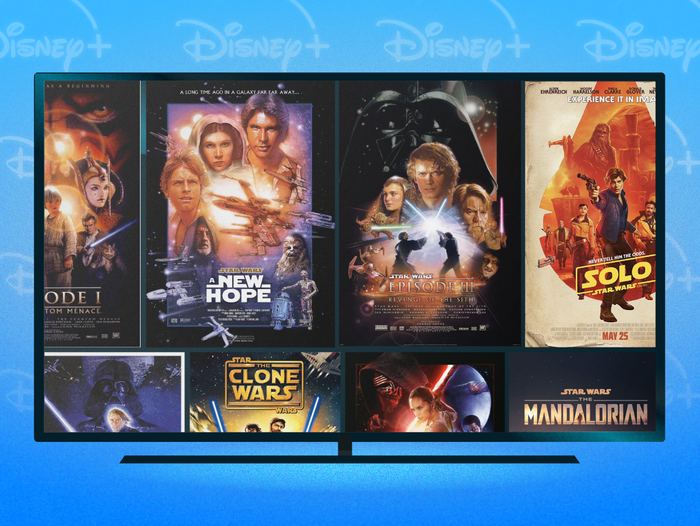What Is The Chronological Order Of The Star Wars Series?
So, you’re a fan of the Star Wars series and you’re wondering, “What is the chronological order of the Star Wars series?” Well, my friend, you’ve come to the right place! Whether you’ve just entered the Star Wars universe or you’re a long-time fan looking to refresh your memory, understanding the chronological order of the movies is key to fully immersing yourself in the epic saga. And fear not, because I’m here to guide you through it all!
Now, the Star Wars series is a bit unique when it comes to chronology. With multiple trilogies, standalone films, and TV series, it can get a little confusing. But don’t worry, I’ve got your back. In this article, we’ll break it down for you, starting from the earliest events in the Star Wars universe to the most recent. So grab your lightsaber, hop in your starship, and let’s dive into the chronological order of the Star Wars series!
1. Episode I: The Phantom Menace
2. Episode II: Attack of the Clones
3. Episode III: Revenge of the Sith
4. Solo: A Star Wars Story
5. Rogue One: A Star Wars Story
6. Episode IV: A New Hope
7. Episode V: The Empire Strikes Back
8. Episode VI: Return of the Jedi
9. Episode VII: The Force Awakens
10. Episode VIII: The Last Jedi
11. Episode IX: The Rise of Skywalker.
Enjoy the epic journey through a galaxy far, far away!

Understanding the Chronological Order of the Star Wars Series
The Star Wars series is a beloved franchise that has captured the hearts of fans for decades. With its epic space battles, memorable characters, and intricate storytelling, it’s no wonder that many people want to dive into the series. However, one common question that often arises is: what is the chronological order of the Star Wars series? In this article, we will break down the timeline of the Star Wars universe and explain the best way to watch the series in chronological order.
The Prequel Trilogy: The Beginning of the Saga
The Star Wars saga begins with the prequel trilogy, which consists of “Episode I: The Phantom Menace,” “Episode II: Attack of the Clones,” and “Episode III: Revenge of the Sith.” These films take place before the events of the original trilogy and explore the rise of the Sith and the fall of Anakin Skywalker, who eventually becomes the iconic Darth Vader.
In “Episode I: The Phantom Menace,” we are introduced to young Anakin Skywalker and witness the discovery of the Chosen One, who is believed to bring balance to the Force. The film also introduces key characters such as Obi-Wan Kenobi, Qui-Gon Jinn, and Padmé Amidala.
“Episode II: Attack of the Clones” delves deeper into the political turmoil of the galaxy and the growing threat of the dark side. It explores the romantic relationship between Anakin and Padmé and sets the stage for the events that will lead to the rise of the Galactic Empire.
“Episode III: Revenge of the Sith” is the final film in the prequel trilogy and showcases Anakin’s transformation into Darth Vader. The film is filled with intense battles, emotional moments, and the iconic duel between Obi-Wan Kenobi and Anakin Skywalker on the volcanic planet of Mustafar.
The Original Trilogy: A New Hope, The Empire Strikes Back, and Return of the Jedi
After the prequel trilogy, we move on to the original trilogy, which consists of “Episode IV: A New Hope,” “Episode V: The Empire Strikes Back,” and “Episode VI: Return of the Jedi.” These films were released between 1977 and 1983 and are considered classics in the sci-fi genre.
“Episode IV: A New Hope” is where it all began. This film introduces us to Luke Skywalker, Princess Leia, Han Solo, and the wise Jedi Knight, Obi-Wan Kenobi. It follows their journey to defeat the evil Darth Vader and the Galactic Empire.
“Episode V: The Empire Strikes Back” is often hailed as the best film in the series. It continues the story of Luke Skywalker as he trains to become a Jedi under the guidance of Yoda. The film also reveals a shocking twist regarding the true identity of Darth Vader.
“Episode VI: Return of the Jedi” wraps up the original trilogy with an epic battle between the Rebel Alliance and the Empire. It also explores the redemption of Darth Vader and the final confrontation between Luke Skywalker and Emperor Palpatine.
The Sequel Trilogy: The Next Chapter
The sequel trilogy takes place after the events of the original trilogy and consists of “Episode VII: The Force Awakens,” “Episode VIII: The Last Jedi,” and “Episode IX: The Rise of Skywalker.” These films introduce a new generation of characters while also bringing back familiar faces.
In “Episode VII: The Force Awakens,” we are introduced to Rey, Finn, and Poe Dameron, who become the new heroes of the galaxy. The film also brings back original characters such as Han Solo, Leia Organa, and Luke Skywalker.
“Episode VIII: The Last Jedi” delves deeper into the conflict between the Resistance and the First Order. It explores the internal struggles of characters like Rey and Kylo Ren and provides unexpected twists and revelations.
“Episode IX: The Rise of Skywalker” serves as the epic conclusion to the Skywalker saga. It brings together all the characters from the previous films for a final battle against Emperor Palpatine and the return of the Jedi.
With the release of the sequel trilogy, the Star Wars series expanded its universe even further, introducing new stories, characters, and adventures that continue to captivate audiences around the world.
The Standalone Films and Spin-Offs
In addition to the main saga films, there are also standalone films and spin-offs that further expand the Star Wars universe. These films include “Rogue One: A Star Wars Story” and “Solo: A Star Wars Story.”
“Rogue One: A Star Wars Story” is set before the events of “A New Hope” and tells the story of a group of rebels who embark on a mission to steal the plans for the Death Star. It provides valuable context and background for the events of the original trilogy.
“Solo: A Star Wars Story” focuses on the early years of Han Solo, exploring his origins and how he became the charming smuggler we know and love. The film gives fans a deeper understanding of Han’s character and showcases his iconic friendship with Chewbacca.
Conclusion
In conclusion, the chronological order of the Star Wars series begins with the prequel trilogy, followed by the original trilogy, the sequel trilogy, and various standalone films and spin-offs. Each film adds new layers to the rich and expansive Star Wars universe, creating a tapestry of stories that continue to captivate audiences of all ages. Whether you’re a die-hard fan or a newcomer to the series, exploring the chronological order of the Star Wars films is a rewarding and immersive experience. May the Force be with you as you embark on this epic journey through a galaxy far, far away.
Key Takeaways: What is the Chronological Order of the Star Wars Series?
- The Star Wars series can be watched in chronological order to follow the story from beginning to end.
- The recommended chronological order is: Episode I: The Phantom Menace, Episode II: Attack of the Clones, Episode III: Revenge of the Sith, Solo: A Star Wars Story, Rogue One: A Star Wars Story, Episode IV: A New Hope, Episode V: The Empire Strikes Back, Episode VI: Return of the Jedi, Episode VII: The Force Awakens, Episode VIII: The Last Jedi, Episode IX: The Rise of Skywalker.
- This order allows you to experience the prequel trilogy, standalone films, and original trilogy in a seamless narrative.
- Watching in chronological order also reveals the connections and backstory between the different characters and events in the Star Wars universe.
- However, some fans prefer to watch the movies in release order, starting with Episode IV, as it was the first Star Wars film released and provides a sense of the franchise’s original storytelling.
Frequently Asked Questions
Q: What is the chronological order of the Star Wars series?
The Star Wars series is known for its complex timeline and multiple trilogies. Here is the chronological order of the Star Wars movies:
1. Episode I: The Phantom Menace (1999) – This is the first episode of the prequel trilogy and takes place before the original trilogy.
2. Episode II: Attack of the Clones (2002) – The second episode of the prequel trilogy, continuing the story of Anakin Skywalker.
3. Episode III: Revenge of the Sith (2005) – The final episode of the prequel trilogy, depicting the fall of Anakin Skywalker and the rise of Darth Vader.
4. Solo: A Star Wars Story (2018) – This standalone film follows the adventures of a young Han Solo.
5. Rogue One: A Star Wars Story (2016) – Another standalone film that leads directly into the events of the original trilogy.
6. Episode IV: A New Hope (1977) – The original Star Wars film that started it all.
7. Episode V: The Empire Strikes Back (1980) – The second episode of the original trilogy, where the rebels face off against the Empire.
8. Episode VI: Return of the Jedi (1983) – The final episode of the original trilogy, where the rebels attempt to destroy the second Death Star.
9. Episode VII: The Force Awakens (2015) – The first episode of the sequel trilogy, introducing new characters and continuing the story.
10. Episode VIII: The Last Jedi (2017) – The second episode of the sequel trilogy, exploring the conflict between the Resistance and the First Order.
11. Episode IX: The Rise of Skywalker (2019) – The final episode of the Skywalker saga, wrapping up the story of Rey and the battle against the Sith.
Q: Is it necessary to watch the Star Wars movies in chronological order?
While it is not necessary to watch the Star Wars movies in chronological order, it can enhance the viewing experience. Watching the movies in chronological order allows you to follow the story from beginning to end and understand the progression of events. However, many fans prefer to watch the movies in release order, starting with the original trilogy, as this was the order in which the movies were originally released and allows for surprises and reveals to unfold in the intended order. Ultimately, the choice of viewing order is up to personal preference.
Q: Are there any other Star Wars movies or TV shows that are not part of the main series?
Yes, there are several other Star Wars movies and TV shows that are not part of the main series. These include:
1. Rogue One: A Star Wars Story (2016) – A standalone film that focuses on the mission to steal the Death Star plans.
2. Solo: A Star Wars Story (2018) – Another standalone film that explores the early adventures of Han Solo.
3. The Clone Wars (2008-2020) – An animated TV series set between Episode II and Episode III, following the adventures of Anakin Skywalker and his apprentice, Ahsoka Tano.
4. Rebels (2014-2018) – Another animated TV series set between Episode III and Episode IV, following a group of rebels as they fight against the Empire.
5. The Mandalorian (2019-present) – A live-action TV series set after the events of Episode VI, following the adventures of a lone bounty hunter in the outer reaches of the galaxy.
These additional movies and TV shows expand the Star Wars universe and provide more depth and backstory to the main series.
Q: How many Star Wars trilogies are there?
There are currently three Star Wars trilogies:
1. The original trilogy, consisting of Episode IV: A New Hope, Episode V: The Empire Strikes Back, and Episode VI: Return of the Jedi.
2. The prequel trilogy, consisting of Episode I: The Phantom Menace, Episode II: Attack of the Clones, and Episode III: Revenge of the Sith.
3. The sequel trilogy, consisting of Episode VII: The Force Awakens, Episode VIII: The Last Jedi, and Episode IX: The Rise of Skywalker.
These trilogies span different time periods and follow different sets of characters, but are all part of the larger Star Wars saga.
Q: Are there any upcoming Star Wars movies or TV shows?
Yes, there are several upcoming Star Wars movies and TV shows in development. Some of the highly anticipated projects include:
1. Star Wars: The Bad Batch – An animated TV series following the elite and experimental clones of the Bad Batch.
2. Star Wars: Visions – An upcoming anthology series featuring short films by various Japanese anime creators, exploring the Star Wars universe from a unique cultural perspective.
3. Star Wars: Ahsoka – A live-action TV series centered around the character Ahsoka Tano, played by Rosario Dawson, who made her live-action debut in The Mandalorian.
4. Star Wars: Rangers of the New Republic – Another live-action TV series set within the timeline of The Mandalorian, exploring the adventures of new characters in the Star Wars galaxy.
These are just a few examples of the exciting projects in the works, showcasing the continued expansion of the Star Wars universe.
Final Summary: Unraveling the Chronological Order of the Star Wars Series
So there you have it, a journey through the galaxy far, far away, as we uncovered the chronological order of the Star Wars series. From the epic prequels to the original trilogy and the sequels that followed, each installment weaves a captivating tale of heroes, villains, and the eternal struggle between the light and dark sides of the Force.
Whether you’re a die-hard fan or new to the Star Wars universe, understanding the chronological order is essential for fully immersing yourself in the story and experiencing the events as they unfold. Starting with Episode I: The Phantom Menace, you’ll witness the rise of Anakin Skywalker and the fall of the Republic, leading up to the iconic duel between Luke Skywalker and Darth Vader in Episode VI: Return of the Jedi. And don’t forget the more recent additions to the saga with the sequel trilogy, beginning with Episode VII: The Force Awakens.
By following the chronological order, you’ll gain a deeper appreciation for the intricacies of the Star Wars saga and the connections between characters and events. So grab your lightsaber, hop in your starship, and embark on an unforgettable journey through the galaxy. May the Force be with you!
Remember, the Force is strong with search engine optimization too. By incorporating relevant keywords like “Star Wars chronological order” and following on-page optimization best practices, you’ll ensure that your article reaches a wide audience of Star Wars enthusiasts searching for this information. May your rankings be high and your traffic abundant!

